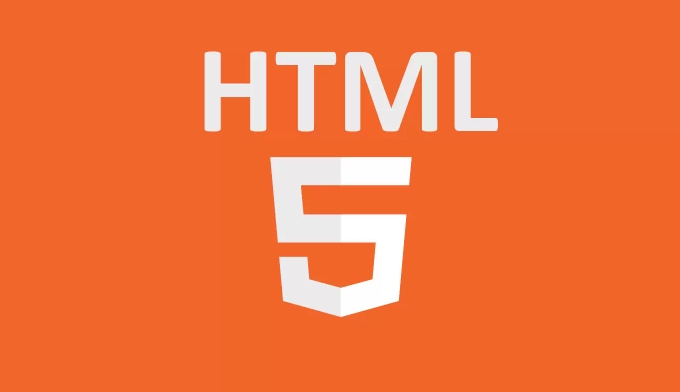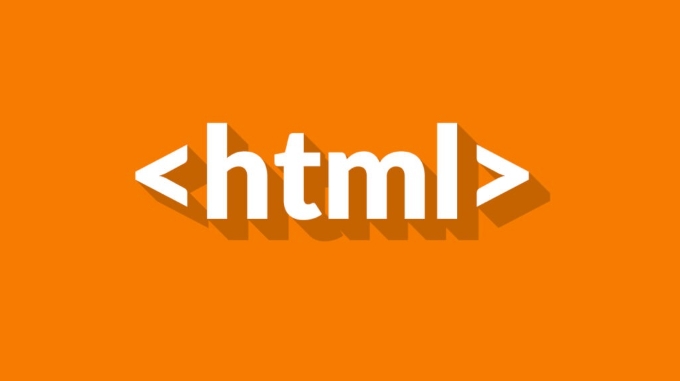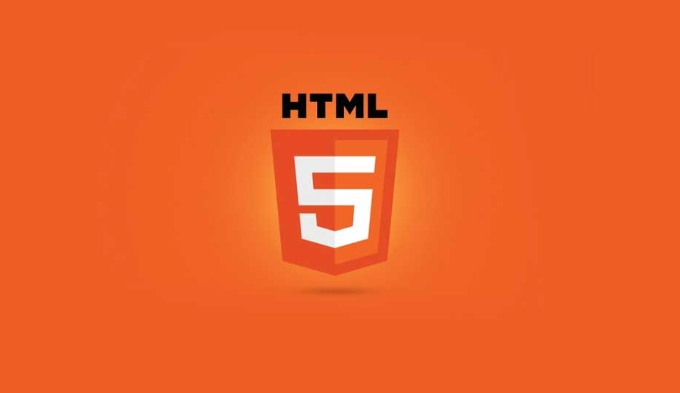How to prevent form resubmission on page refresh in HTML?
Jul 14, 2025 am 02:12 AMRefreshing after submitting a form may lead to repeated submissions, which can be avoided in three ways: 1. Using PRG mode, the server returns a redirect response after processing the POST request, causing the user to jump to a new page to prevent repeated submissions; 2. The front-end uses JavaScript to disable the submission button after the first submission or prevent repeated triggers, which is suitable for simple scenarios; 3. Using Session Token, embed a one-time token in the form, verify and invalidate it during submission, which is suitable for highly concurrent or sensitive operations.

When you submit a form on a web page, if the refresh page submits the same content again, it may cause duplicate data or unexpected operations. This problem is common, but there are several practical ways to avoid it.

Use Post/Redirect/Get (PRG) mode
This is the most common and recommended method. After the user submits the form, the server returns a redirect response (usually 303 or 302) after processing the POST request, and the browser will jump to the new URL instead of staying on the original submission page.

For example:
- Users visit
form.htmlto submit data - The backend receives a POST request and returns
Location: success.htmlafter processing the data. - The browser will automatically jump to
success.html
This way, even if the user refreshes the page, it will just reload success.html without repeatedly submitting the form.

The key points to achieve are:
- The backend must correctly set the HTTP status code and Location header
- The form page and the processing page should be designed separately
Use JavaScript on the front end to prevent duplicate submissions
If you don't want to or can't use backend redirection, you can use JavaScript to control whether the form allows resubmission.
A common practice is to disable the submit button after the user's first submission:
<form onsubmit="this.submitButton.disabled = true;"> <!-- Form content--> <button type="submit" name="submitButton">Submit</button> </form>
Or be more flexible and make judgments in JS:
<script>
let submitted = false;
document.querySelector('form').addEventListener('submit', function(e) {
if (submitted) {
e.preventDefault();
} else {
submitted = true;
}
});
</script>This approach is suitable for simple scenarios, but it does not completely prevent users from repeating submissions through manual refresh of the address bar.
Leverage Session Token (one-time token)
This method is more suitable for preventing malicious forms swiping or repeated submission problems under high concurrency. The basic idea is: generate a unique token when loading the form and save it in the session; verify whether the token is valid when submitting, and the token will be invalidated immediately after the verification is successful.
The steps are as follows:
- Generate a random token when the page is loaded and embedded in the form hidden field
- When the user submits, the server checks whether the token matches and has not been used.
- If it matches, process the request and mark the token used
- The token is illegal when submitting again, and the execution is refused
This method is relatively safe, but requires front-end cooperation and is suitable for sensitive operations such as order submission, payment, etc.
Conclusion
These methods have their own applicable scenarios: the PRG mode is simple and effective, the JS method is convenient and fast, and the token is safer but has a slightly more complexity. Just choose the right method according to your project needs. Basically that's it.
The above is the detailed content of How to prevent form resubmission on page refresh in HTML?. For more information, please follow other related articles on the PHP Chinese website!

Hot AI Tools

Undress AI Tool
Undress images for free

Undresser.AI Undress
AI-powered app for creating realistic nude photos

AI Clothes Remover
Online AI tool for removing clothes from photos.

Clothoff.io
AI clothes remover

Video Face Swap
Swap faces in any video effortlessly with our completely free AI face swap tool!

Hot Article

Hot Tools

Notepad++7.3.1
Easy-to-use and free code editor

SublimeText3 Chinese version
Chinese version, very easy to use

Zend Studio 13.0.1
Powerful PHP integrated development environment

Dreamweaver CS6
Visual web development tools

SublimeText3 Mac version
God-level code editing software (SublimeText3)
 Applying Semantic Structure with article, section, and aside in HTML
Jul 05, 2025 am 02:03 AM
Applying Semantic Structure with article, section, and aside in HTML
Jul 05, 2025 am 02:03 AM
The rational use of semantic tags in HTML can improve page structure clarity, accessibility and SEO effects. 1. Used for independent content blocks, such as blog posts or comments, it must be self-contained; 2. Used for classification related content, usually including titles, and is suitable for different modules of the page; 3. Used for auxiliary information related to the main content but not core, such as sidebar recommendations or author profiles. In actual development, labels should be combined and other, avoid excessive nesting, keep the structure simple, and verify the rationality of the structure through developer tools.
 How to group options within a select dropdown using html?
Jul 04, 2025 am 03:16 AM
How to group options within a select dropdown using html?
Jul 04, 2025 am 03:16 AM
Use tags in HTML to group options in the drop-down menu. The specific method is to wrap a group of elements and define the group name through the label attribute, such as: 1. Contains options such as apples, bananas, oranges, etc.; 2. Contains options such as carrots, broccoli, etc.; 3. Each is an independent group, and the options within the group are automatically indented. Notes include: ① No nesting is supported; ② The entire group can be disabled through the disabled attribute; ③ The style is restricted and needs to be beautified in combination with CSS or third-party libraries; plug-ins such as Select2 can be used to enhance functions.
 Implementing Clickable Buttons Using the HTML button Element
Jul 07, 2025 am 02:31 AM
Implementing Clickable Buttons Using the HTML button Element
Jul 07, 2025 am 02:31 AM
To use HTML button elements to achieve clickable buttons, you must first master its basic usage and common precautions. 1. Create buttons with tags and define behaviors through type attributes (such as button, submit, reset), which is submitted by default; 2. Add interactive functions through JavaScript, which can be written inline or bind event listeners through ID to improve maintenance; 3. Use CSS to customize styles, including background color, border, rounded corners and hover/active status effects to enhance user experience; 4. Pay attention to common problems: make sure that the disabled attribute is not enabled, JS events are correctly bound, layout occlusion, and use the help of developer tools to troubleshoot exceptions. Master this
 Configuring Document Metadata Within the HTML head Element
Jul 09, 2025 am 02:30 AM
Configuring Document Metadata Within the HTML head Element
Jul 09, 2025 am 02:30 AM
Metadata in HTMLhead is crucial for SEO, social sharing, and browser behavior. 1. Set the page title and description, use and keep it concise and unique; 2. Add OpenGraph and Twitter card information to optimize social sharing effects, pay attention to the image size and use debugging tools to test; 3. Define the character set and viewport settings to ensure multi-language support is adapted to the mobile terminal; 4. Optional tags such as author copyright, robots control and canonical prevent duplicate content should also be configured reasonably.
 Best HTML tutorial for beginners in 2025
Jul 08, 2025 am 12:25 AM
Best HTML tutorial for beginners in 2025
Jul 08, 2025 am 12:25 AM
TolearnHTMLin2025,chooseatutorialthatbalanceshands-onpracticewithmodernstandardsandintegratesCSSandJavaScriptbasics.1.Prioritizehands-onlearningwithstep-by-stepprojectslikebuildingapersonalprofileorbloglayout.2.EnsureitcoversmodernHTMLelementssuchas,
 How to associate captions with images or media using the html figure and figcaption elements?
Jul 07, 2025 am 02:30 AM
How to associate captions with images or media using the html figure and figcaption elements?
Jul 07, 2025 am 02:30 AM
Using HTML sums allows for intuitive and semantic clarity to add caption text to images or media. 1. Used to wrap independent media content, such as pictures, videos or code blocks; 2. It is placed as its explanatory text, and can be located above or below the media; 3. They not only improve the clarity of the page structure, but also enhance accessibility and SEO effect; 4. When using it, you should pay attention to avoid abuse, and apply to content that needs to be emphasized and accompanied by description, rather than ordinary decorative pictures; 5. The alt attribute that cannot be ignored, which is different from figcaption; 6. The figcaption is flexible and can be placed at the top or bottom of the figure as needed. Using these two tags correctly helps to build semantic and easy to understand web content.
 HTML for email templates tutorial
Jul 10, 2025 pm 02:01 PM
HTML for email templates tutorial
Jul 10, 2025 pm 02:01 PM
How to make HTML mail templates with good compatibility? First, you need to build a structure with tables to avoid using div flex or grid layout; secondly, all styles must be inlined and cannot rely on external CSS; then the picture should be added with alt description and use a public URL, and the buttons should be simulated with a table or td with background color; finally, you must test and adjust the details on multiple clients.
 How to embed content from another site using the html iframe tag?
Jul 04, 2025 am 03:17 AM
How to embed content from another site using the html iframe tag?
Jul 04, 2025 am 03:17 AM
Use tags to embed other website content into your own web page. The basic syntax is:, you can add width, height, and style="border:none;" to control the appearance; in order to achieve responsive layout, you can set the size through percentage or use containers to combine padding and absolute positioning to maintain the aspect ratio, while paying attention to cross-domain restrictions, loading performance, SEO impact, and security policies. Common uses include embedding maps, third-party forms, social media content and internal system integration.






